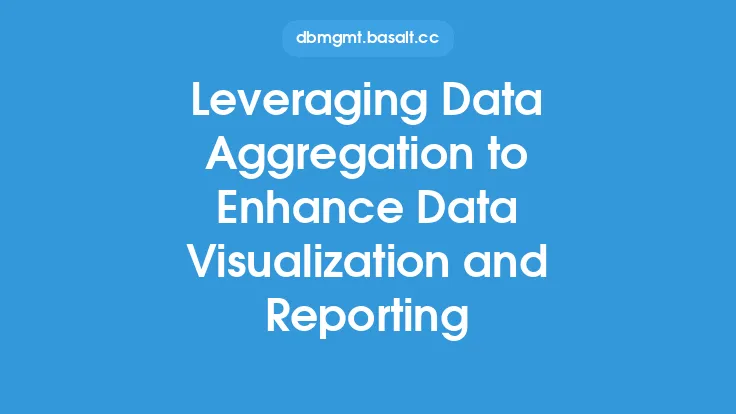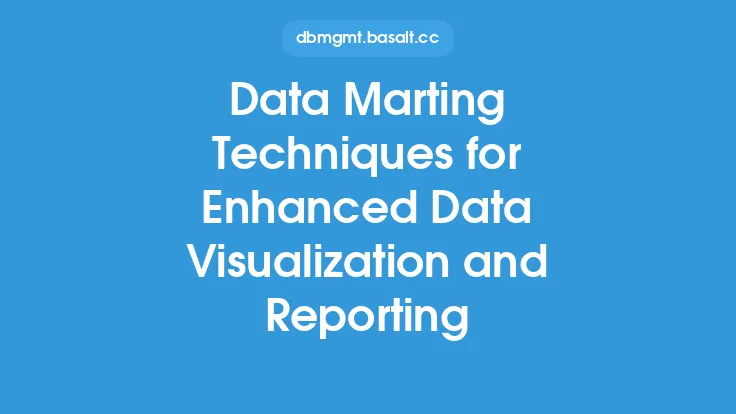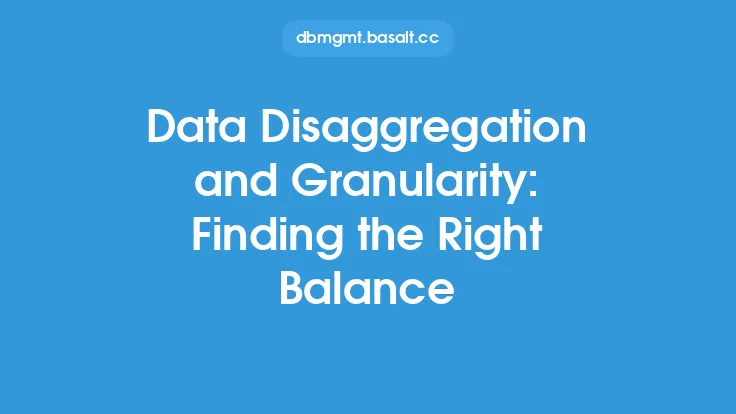Data visualization and reporting are essential components of data analysis, as they enable stakeholders to understand complex data insights and make informed decisions. However, the effectiveness of data visualization and reporting relies heavily on the quality and granularity of the data being presented. This is where data disaggregation comes into play, as it involves breaking down complex data sets into smaller, more manageable components, allowing for a more nuanced understanding of the data. By enhancing data visualization and reporting, data disaggregation provides a more detailed and accurate representation of the data, enabling stakeholders to identify trends, patterns, and correlations that may have been obscured by aggregated data.
Introduction to Data Disaggregation
Data disaggregation is a process that involves decomposing complex data sets into smaller, more granular components. This can be achieved through various techniques, such as categorization, grouping, and filtering. By breaking down data into smaller components, data disaggregation enables analysts to examine the data from different perspectives, identify relationships between variables, and uncover hidden insights. Data disaggregation is particularly useful when dealing with large, complex data sets, as it allows analysts to focus on specific aspects of the data and gain a deeper understanding of the underlying trends and patterns.
Benefits of Data Disaggregation in Data Visualization
Data disaggregation has several benefits when it comes to data visualization. Firstly, it enables analysts to create more detailed and accurate visualizations, as the data is broken down into smaller, more manageable components. This allows for a more nuanced understanding of the data, as analysts can examine the data from different perspectives and identify relationships between variables. Secondly, data disaggregation enables analysts to identify trends and patterns that may have been obscured by aggregated data. By breaking down the data into smaller components, analysts can see how different variables interact and influence each other, providing a more comprehensive understanding of the data. Finally, data disaggregation enables analysts to create more targeted and effective visualizations, as they can focus on specific aspects of the data and create visualizations that are tailored to the needs of the stakeholders.
Enhancing Reporting with Data Disaggregation
Data disaggregation also has a significant impact on reporting, as it enables analysts to create more detailed and accurate reports. By breaking down complex data sets into smaller components, analysts can examine the data from different perspectives and identify relationships between variables. This allows for a more nuanced understanding of the data, as analysts can see how different variables interact and influence each other. Additionally, data disaggregation enables analysts to create more targeted and effective reports, as they can focus on specific aspects of the data and create reports that are tailored to the needs of the stakeholders. For example, a report on customer behavior can be broken down into smaller components, such as demographics, location, and purchase history, allowing analysts to gain a deeper understanding of the underlying trends and patterns.
Technical Aspects of Data Disaggregation
From a technical perspective, data disaggregation involves several key steps. Firstly, the data must be collected and cleaned, to ensure that it is accurate and reliable. Secondly, the data must be categorized and grouped, to enable analysts to examine the data from different perspectives. This can be achieved through various techniques, such as clustering, decision trees, and regression analysis. Finally, the data must be visualized and reported, to enable stakeholders to understand the insights and trends that have been identified. This can be achieved through various tools and technologies, such as data visualization software, reporting tools, and business intelligence platforms.
Best Practices for Data Disaggregation
To get the most out of data disaggregation, there are several best practices that analysts should follow. Firstly, analysts should ensure that the data is accurate and reliable, to avoid any errors or biases that may impact the insights and trends that are identified. Secondly, analysts should use a range of techniques to categorize and group the data, to enable a nuanced understanding of the data. Thirdly, analysts should use data visualization and reporting tools to communicate the insights and trends to stakeholders, in a clear and effective manner. Finally, analysts should continually monitor and refine the data disaggregation process, to ensure that it remains effective and efficient over time.
Common Challenges and Limitations
While data disaggregation has several benefits, there are also some common challenges and limitations that analysts should be aware of. Firstly, data disaggregation can be time-consuming and resource-intensive, particularly when dealing with large, complex data sets. Secondly, data disaggregation requires a high degree of technical expertise, to ensure that the data is accurately and reliably categorized and grouped. Thirdly, data disaggregation can be impacted by data quality issues, such as missing or inaccurate data, which can affect the accuracy and reliability of the insights and trends that are identified. Finally, data disaggregation can be limited by the availability of data, as some data sets may not be available or may be difficult to access.
Real-World Applications of Data Disaggregation
Data disaggregation has a range of real-world applications, across various industries and sectors. For example, in healthcare, data disaggregation can be used to analyze patient outcomes and identify trends and patterns in disease diagnosis and treatment. In finance, data disaggregation can be used to analyze customer behavior and identify trends and patterns in spending and investment. In marketing, data disaggregation can be used to analyze customer demographics and identify trends and patterns in purchasing behavior. By breaking down complex data sets into smaller components, data disaggregation enables analysts to gain a deeper understanding of the underlying trends and patterns, and make more informed decisions.
Conclusion
In conclusion, data disaggregation is a powerful technique that enhances data visualization and reporting, by breaking down complex data sets into smaller, more manageable components. By enabling analysts to examine the data from different perspectives, identify relationships between variables, and uncover hidden insights, data disaggregation provides a more detailed and accurate representation of the data. While there are some common challenges and limitations to data disaggregation, the benefits of this technique make it an essential component of data analysis, with a range of real-world applications across various industries and sectors. By following best practices and using a range of techniques to categorize and group the data, analysts can unlock the full potential of data disaggregation and gain a deeper understanding of the underlying trends and patterns in the data.





